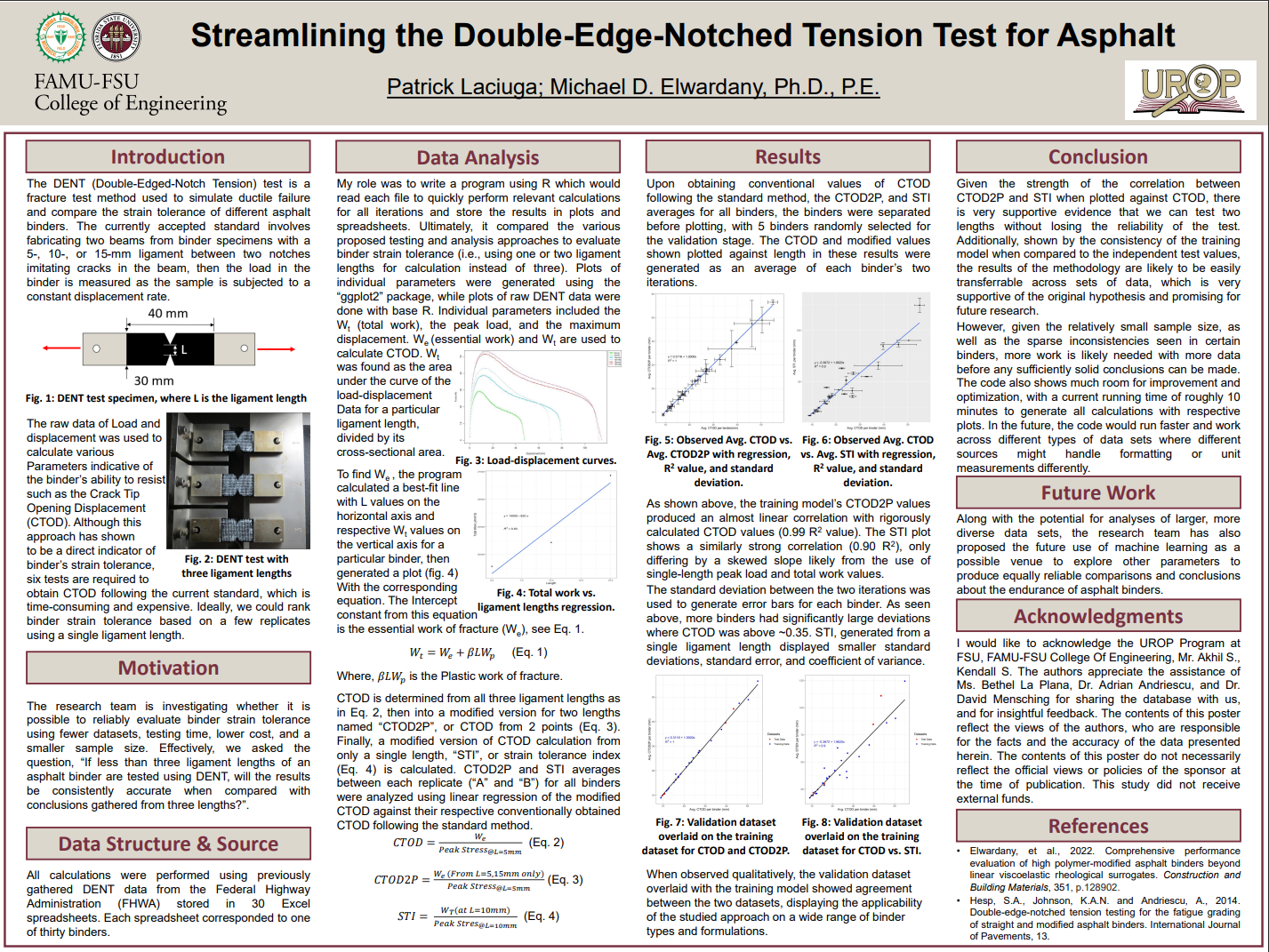Research Symposium
23rd annual Undergraduate Research Symposium, April 6, 2023
Patrick Laciuga Poster Session 3: 2:45 pm - 3:45 pm/ Poster #306

BIO
My name is Patrick Laciuga and I am a first-year computer engineering student at FSU. I took this academic path because of my long-time interests in computer hardware, but I also enjoy math/problem-solving and thus am also very interested in data analysis or coding whenever applicable.
Streamlining the Double-Edge-Notched Tension Test for Asphalt
Authors: Patrick Laciuga, Dr. Michael ElwardanyStudent Major: Computer Engineering
Mentor: Dr. Michael Elwardany
Mentor's Department: Civil Engineering Mentor's College: FAMU-FSU College of Engineering Co-Presenters:
Abstract
The Double-Edged Notch Tension (DENT) test is a fracture mechanics test method which compares asphalt binders’ cracking resistance by applying a constant displacement rate on double-edged-notched beams and measuring tension forces. Typically, DENT data is gathered from six beams, in which two replicates are tested at three ligament lengths: 5, 10, and 15 mm. This data is used to calculate the binder’s Crack Tip Opening Displacement (CTOD), which indicates binder’s strain tolerance and resistance to cracking at intermediate temperatures (i.e., 15-25˚C). However, conducting the test using two replicates and three ligament lengths requires extensive preparation and testing time, large sample sizes (~150 grams), and consequently high cost. The goal of this research is to find out whether it is possible to gather an equally reliable alternative to CTOD, reaching the same general conclusions, using data gathered from less than three ligament lengths. This was done using previously gathered DENT data from tests conducted using 5-, 10-, and 15-mm ligament lengths of 30 different binders. The data was analyzed en-masse using code written in the R programming language, to generate a model for predicting measurements of all lengths using linear regression analyses, comparing rigorously calculated CTOD values to values generated from two ligament lengths, and values from one. Results so far have showed an almost linear correlation (0.99 R-squared) in the training data of the model for CTOD calculated from two ligament lengths, and 0.9 R-squared between CTOD and a single-length substitute for CTOD called STI (strain tolerance index)
Keywords: Civil Engineering, Asphalt, Data


